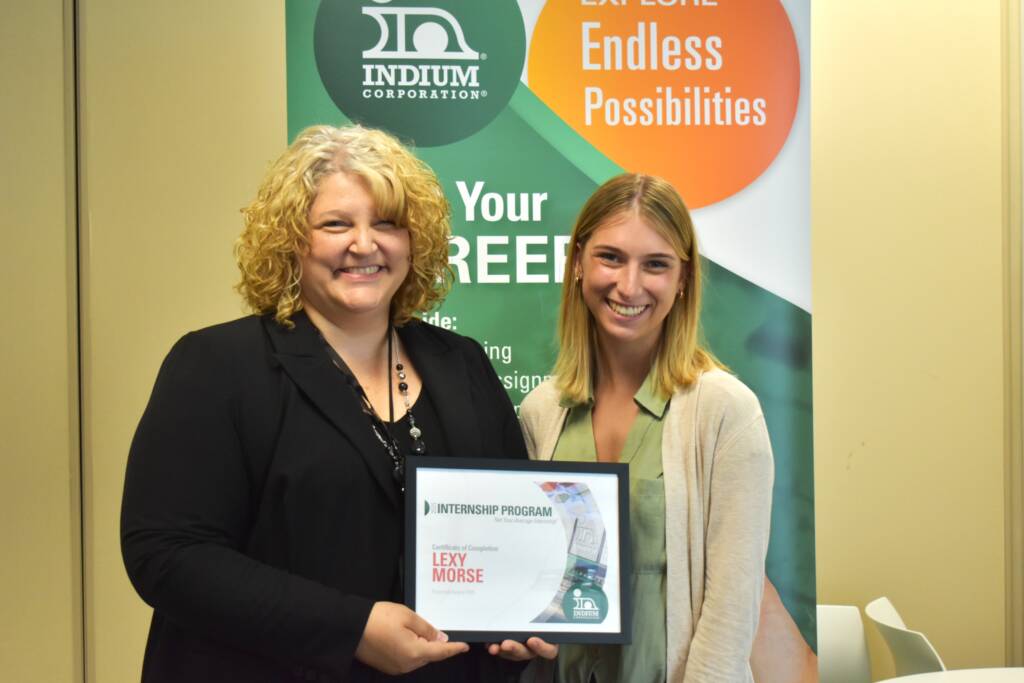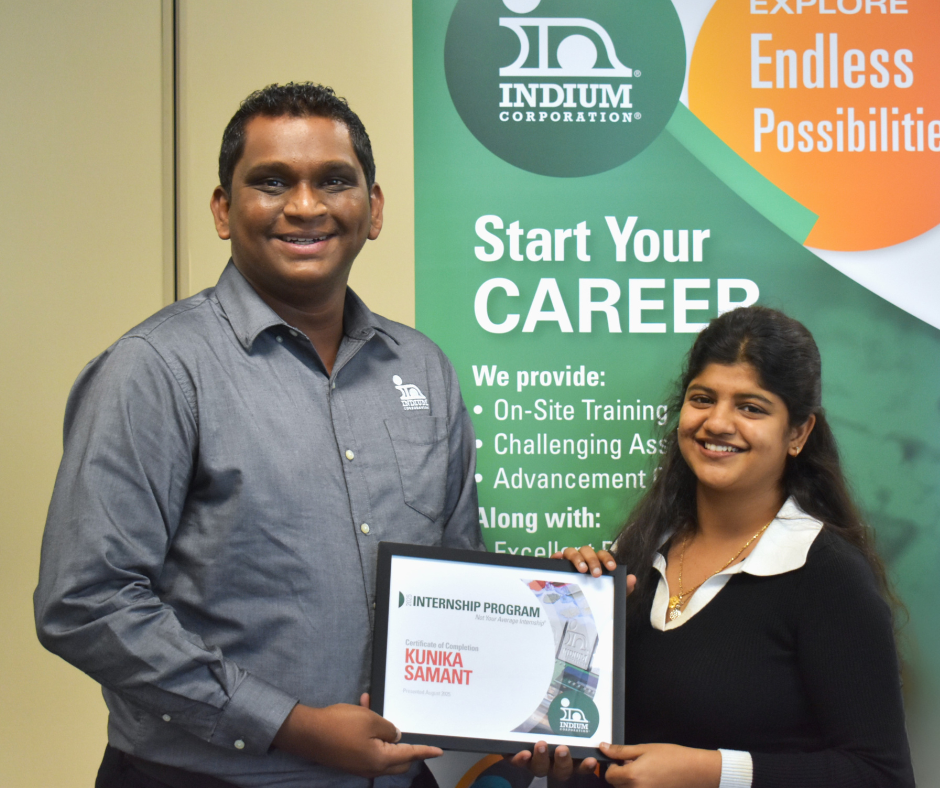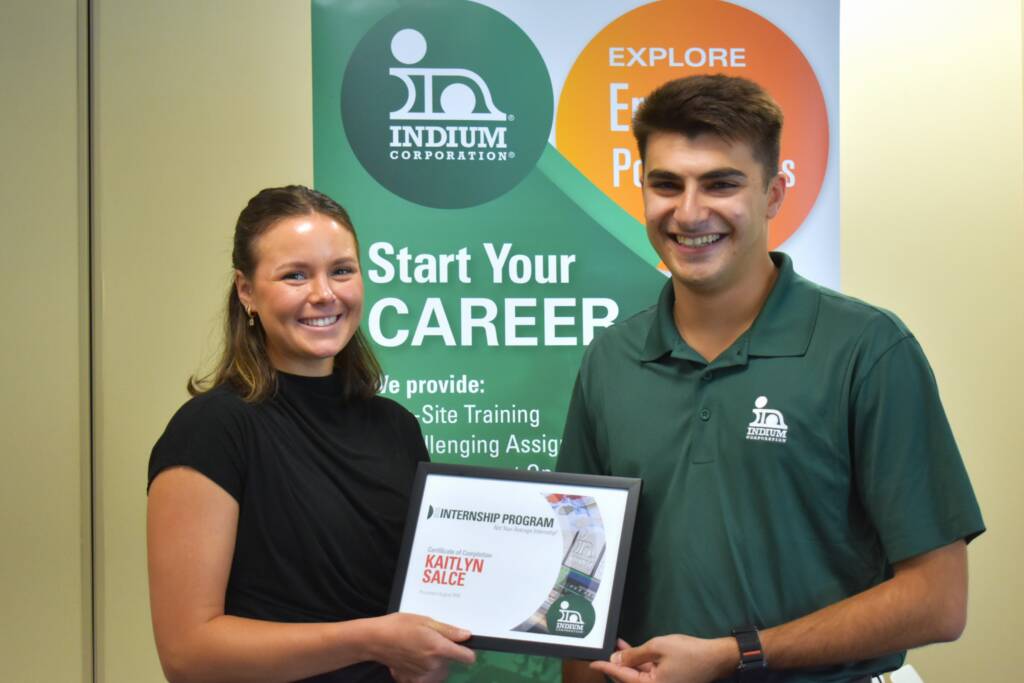Through my education and my extracurriculars, I have learned one very important lesson: when working with robots, prepare to be surprised. Now, hear me out, this isn’t a sign of bad engineering or an indicator that you’ve done something wrong; it is simply a part of life. As we all know, technology can be unpredictable. My internship at Indium Corporation thus far has allowed me to gain new experience through working with manufacturing robots. However, my motto has stayed the same: always expect the unexpected.
As the Robotics Intern at Indium Corporation, I was able to expand my horizons when working with robots and move out of my comfort zone. Previously, I had only ever worked on small-wheeled robots, and my programs were all written line by line, describing exactly how the robot should move. My most exciting hands-on project before this internship was on the Binghamton University Rover Team. Over the course of a year, my team collaboratively designed and built a mock Mars rover for a competition in Utah. Even though this was a fairly large project and involved some similar knowledge and skills, the robotics experience at Indium Corporation was on a different level.
This summer I’ve been working with a large manufacturing robot, with my programs done on a human machine interface (HMI). This mostly consists of clicking the right buttons and adding in the right parameters, which is a lot more complex than it may sound. Although this type of programming is different than what I’m used to, I’ve come to realize that at its core, the logic remains the same. The key to a successful program, regardless of its form, is to think like a robot! You have to carefully consider each and every step, even those trivial ones that humans tend to overlook.
Learning a new method of programming has been a very fun and rewarding process, through which I have been able to expand my expertise far beyond my original expectation. Over the course of these ten weeks, I’ve worked on exciting new parts of the robot and even learned some computer vision! Computer vision consists of using cameras on the robot to analyze images for certain features. For my role’s purposes, I used this to locate the parts I was trying to work with. The robot has several different vision processes, all of which need to be tuned for each new part. There are clear directions and instructions on how to do this, but as always, you should expect something to not work the way you want. On almost every part I’ve done, something would come out odd at first, and I would need to make adjustments accordingly. Surprisingly, this wasn't frustrating, but allowed me to understand my tools very thoroughly through constant practice and trial and error, which would not have been possible had everything gone smoothly the first time around.
Additionally, as part of my project, I was tasked with creating tutorial videos describing how to program new parts on the robot. Now, I must say, I’m an engineer, and I have absolutely no video editing experience. Although the task was daunting at first, the key has been to take it step by step. So, I first planned out how I wanted to organize the videos and started small by writing my scripts. Then, I familiarized myself with the software I’d be using to record and edit the videos. This part of my project was definitely the most unexpected, but I also found it intriguing and exciting to learn something new.
All in all, I’ve gained so much during my time here at Indium Corporation, and it has truly given me a way to move beyond what I’ve learned in the classroom. Being able to learn new things, even video editing, has been a wonderful experience, through which I’ve had so much fun while finding myself growing tremendously as an engineer. Moving out of my comfort zone has taught me even more about expecting the unexpected, and I’ve enjoyed every second of it.



